Greetings from CPIP Executive Director Sean O’Connor
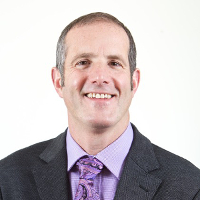
I hope summer is seeing you healthy and safe. Over four months have passed since the Washington, D.C., area began to feel the impact of COVID-19. Now, as summer progresses and we start anticipating and planning for fall, we’re looking to navigate the new normal in the classroom, workplace, and of course in the virtual space.
In June, CPIP hosted the WIPO-CPIP Summer School on Intellectual Property for the third year running. Usually the program is held at Antonin Scalia Law School in Arlington, Virginia, and both U.S. and international attendees gather to study and network for two weeks in June. This year, however, we opted to move the entire program online, streaming it via Webex. Nearly one hundred attendees from all over the world were able to attend live virtual lectures and panels by a great lineup of experts, both in IP and related fields. We’re grateful to the CPIP staff, our IT support at Scalia Law, and to all our speakers and students for helping make this year’s Summer School successful and memorable in many ways.
As part of the Summer School, CPIP co-hosted a public panel, Patents on Life: Diamond v. Chakrabarty at 40, with the Smithsonian Institution’s Lemelson Center on June 17. We’re grateful to all the speakers who lent their expertise to this interesting and timely discussion, and most especially Dr. Ananda Chakrabarty, the inventor at the heart of the Diamond v. Chakrabarty case. Sadly, less than a month after the panel, we received the news that Dr. Chakrabarty had passed away. Our deepest condolences go out to his family and friends as we also remember his personal and professional legacy.
COVID-19 has complicated plans for many upcoming events, including ours. While we had hoped to hold our much-anticipated The Evolving Music Ecosystem conference in person by moving it from this past spring until the fall, best guidance now dictates that we move it online. We still look forward to a stellar event running from September 9-11, including a keynote address from Rosanne Cash. We will also move our Annual Fall Conference on October 8 to a fully online format. This year’s theme will focus on the IP issues surrounding the rollout of 5G wireless technology. Thank you for your patience as we pursue dual priorities: continuing to support the dialogue surrounding IP and keeping everyone involved safe and well.
I would like to congratulate and welcome Dr. Hina Mehta, Director of Mason’s Office of Technology Transfer, as an Affiliate Scholar with CPIP. Dr. Mehta has taught during the WIPO-CPIP Summer School these past two years, and we’re happy to have her join us and work with us on a more official basis.
I also want to thank those IP scholars who signed our May response to the Office of Science and Technology Policy’s call for comments on the possible effects of free, public access to scholarly research.
On a personal note, I have become a regular contributor to The Hill with a mix of IP and other opinion topics based on my broader historical research. Articles to date include: Avoiding Another Great Depression Through a Developmentally Layered Reopening of the Economy, Cancel Culture, Copyright, and the Harper’s Letter, and How We Finally Tip Into “Bread and Circuses’ Authoritarianism.
In May, I participated as a panelist for the COVID-19 CHHS Webinar Series with Mason’s College of Health and Human Services in the episode Weighing the Decision to Safely ‘Reopen’ Northern Virginia; the episode was also noted by DCist and Fairfax County Economic Development Authority. COVID-19 has not completely taken over all events and conversations, though. I spoke in April at a virtual session on copyright and social justice hosted by the University of Akron School of Law’s Intellectual Property & Technology Law Association, and in June at the NVTC Impact AI Conference on the panel Protecting AI Inventions: Current Issues and Best Practices.
I’d like to thank Akron’s Professor Camilla Hrdy for providing her comments on my paper Distinguishing Different Kinds of Property in Patents and Copyright, which was also shared on the Private Law Theory blog.
In conclusion, the past few months have been full and productive, and I look forward to seeing CPIP and our friends and supporters successfully navigate the remainder of 2020. I wish you the best over the coming months as we hope and cooperate to put COVID-19 behind us. Until then, we continue to be in this together.
Online Music Law Conference with Rosanne Cash on September 9-11
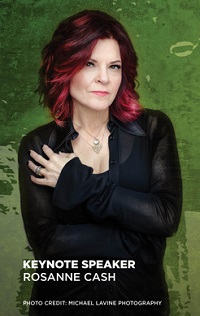
We are excited to announce that the music law conference, The Evolving Music Ecosystem, which will be held online from Antonin Scalia Law School in Arlington, Virginia, has now been extended to a three-day event on September 9-11, 2020. The keynote address will be given by Rosanne Cash, and it features panel presentations from leading experts.
This unique conference continues a dialogue on the music ecosystem begun by CPIP Executive Director Sean O’Connor while at the University of Washington School of Law in Seattle. In its inaugural year in the D.C. area, the conference aims to bring together musicians, music fans, lawyers, artist advocates, business leaders, government policymakers, and anyone interested in supporting thriving music ecosystems in the U.S. and beyond.
For more information, and to register, please click here.
“Patents on Life” Panel Discussion Video Now Available
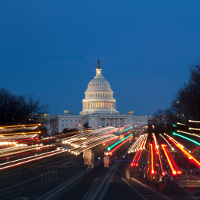
On June 17, 2020, CPIP and the Smithsonian Institution’s Lemelson Center for the Study of Invention and Innovation co-hosted a virtual panel discussion entitled Patents on Life: Diamond v. Chakrabarty at 40. CPIP Executive Director Sean O’Connor delivered closing remarks after a panel presentation that included the late inventor and distinguished professor of microbiology and immunology Dr. Ananda Chakrabarty.
The panelists discussed the 1980 Supreme Court ruling in Diamond v. Chakrabarty that authorized the first patent on an intentionally genetically modified organism and that contributed to the rise of the modern biotechnology industry and reshaped the agriculture industry. Video from the panel discussion is available here, and our blog post summarizing it is available here.
Spotlight on Scholarship

Christopher M. Holman, Congress Should Decline Ill-Advised Legislative Proposals Aimed at Evergreening of Pharmaceutical Patent Protection, 51 U. Pac. L. Rev. 493 (2020)
Many believe that drug prices in the U.S. are unnecessarily high because the pharmaceutical industry is exploiting legal loopholes and acquiring dubious patents to extend protection and delay generics from entering the market (so-called “evergreening” behavior by drug innovators). However, CPIP Senior Scholar Chris Holman of the University of Missouri-Kansas City School of Law has published a new paper arguing that these recent concerns regarding patents and drug prices are unfounded. The paper, entitled Congress Should Decline Ill-Advised Legislative Proposals Aimed at Evergreening of Pharmaceutical Patent Protection and published in the University of the Pacific Law Review, further challenges recent legislative proposals aimed at pharmaceutical evergreening, finding that they “are largely misguided, and, if enacted, would be likely to cause more harm than good by discouraging innovation in pharmaceuticals without effectively addressing the core concern.” Our blog post summarizing the paper is available here.
Michael S. Greve, Exceptional, After All and After Oil States: Judicial Review and the Patent System, 26 B.U. J. Sci. & Tech. L. 1 (2020)
What if there is a way for a patent applicant to obtain a “gold-plated patent” that is immune to administrative cancellation before the Patent Trial and Appeal Board (PTAB) at the U.S. Patent and Trademark Office (PTO)? This intriguing notion is the subject of a recent paper by Professor Mike Greve of Scalia Law, titled Exceptional, After All and After Oil States: Judicial Review and the Patent System and published in the Winter 2020 edition of the Boston University Journal of Science and Technology Law. Prof. Greve presented an early draft of this paper at the “Perspectives on the PTAB: The New Role of the Administrative State in the Innovation Economy” conference that was co-hosted by CPIP and the Gray Center at Scalia Law. Our blog post summarizing the paper is available here.
Activities, News, & Events

CPIP Executive Director Sean O’Connor continues to lead the law school’s new Innovation Law Clinic. The Clinic teams law students (IP, corporate, tax) to analyze and counsel entrepreneurs, creators, and inventors from the University’s internal and external communities. The course teaches students about entrepreneurship and commercializing innovation and creativity, as well as how to craft an overall legal strategy in the context of a client’s business, technology, and/or artistic vision. A core deliverable is the Innovator’s Roadmap, which provides a comprehensive, client eyes-only analysis of the venture and legal issues it needs to address in the near and mid-term. Anticipated projects include hydrogen fuel cell refilling technology venture; edutainment and fundraising franchise system for community building; emerging fashion designer; online platform for fictional world-building authors; and an innovative medical device venture spinning out of the University. Specific legal services to be delivered can include entity formation; securing or licensing IP; drafting employment agreements; and advice on tax filings.
CPIP Director of Copyright Research & Policy Sandra Aistars will lead the law school’s Arts & Entertainment Advocacy Clinic again this fall. The Clinic teaches students the legal and policy skills required for engaging with Congress, agencies, and courts on behalf of copyright owners. Students will develop substantive legal knowledge in copyright and related areas of law as well as practical skills in research, writing, and advocacy by counseling clients and preparing legal and policy documents. Anticipated projects this fall include identifying ownership and clearing rights for illustration created in the 1960s, conducting an online legal clinic for members of Washington Area Lawyers for the Arts (WALA), contract drafting and strategic planning for a musician-owned music licensing service, and continued collaboration and special projects for the U.S. Copyright Office.
CPIP has published a new policy brief by CPIP Senior Fellow for Innovation Policy Jonathan Barnett entitled The Long Shadow of the Blackberry Shutdown That Wasn’t. The policy brief looks at how the Blackberry litigation and the “patent troll” narrative ultimately contributed to the Supreme Court’s 2006 decision in eBay v. MercExchange that limited the availability of injunctive relief for successful patentees. Prof. Barnett then examines the problematic legacy of the post-eBay case law, which significantly shifted the legal infrastructure supporting the U.S. innovation markets. In particular, he explains how this shift has led to opportunistic infringement that favors downstream incumbents with the resources to fund extensive litigation at the expense of upstream innovators—a dynamic that is exemplified in the recent litigation between Sonos and Google.
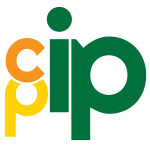 CPIP has published a new policy brief by CPIP Senior Fellow for Innovation Policy Jonathan Barnett entitled
CPIP has published a new policy brief by CPIP Senior Fellow for Innovation Policy Jonathan Barnett entitled  By Yumi Oda
By Yumi Oda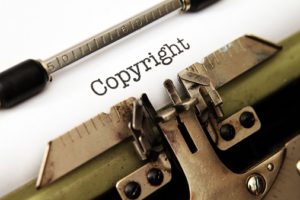 On March 24, the Internet Archive (Archive)
On March 24, the Internet Archive (Archive) 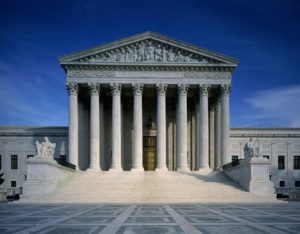 By Ryan Reynolds
By Ryan Reynolds